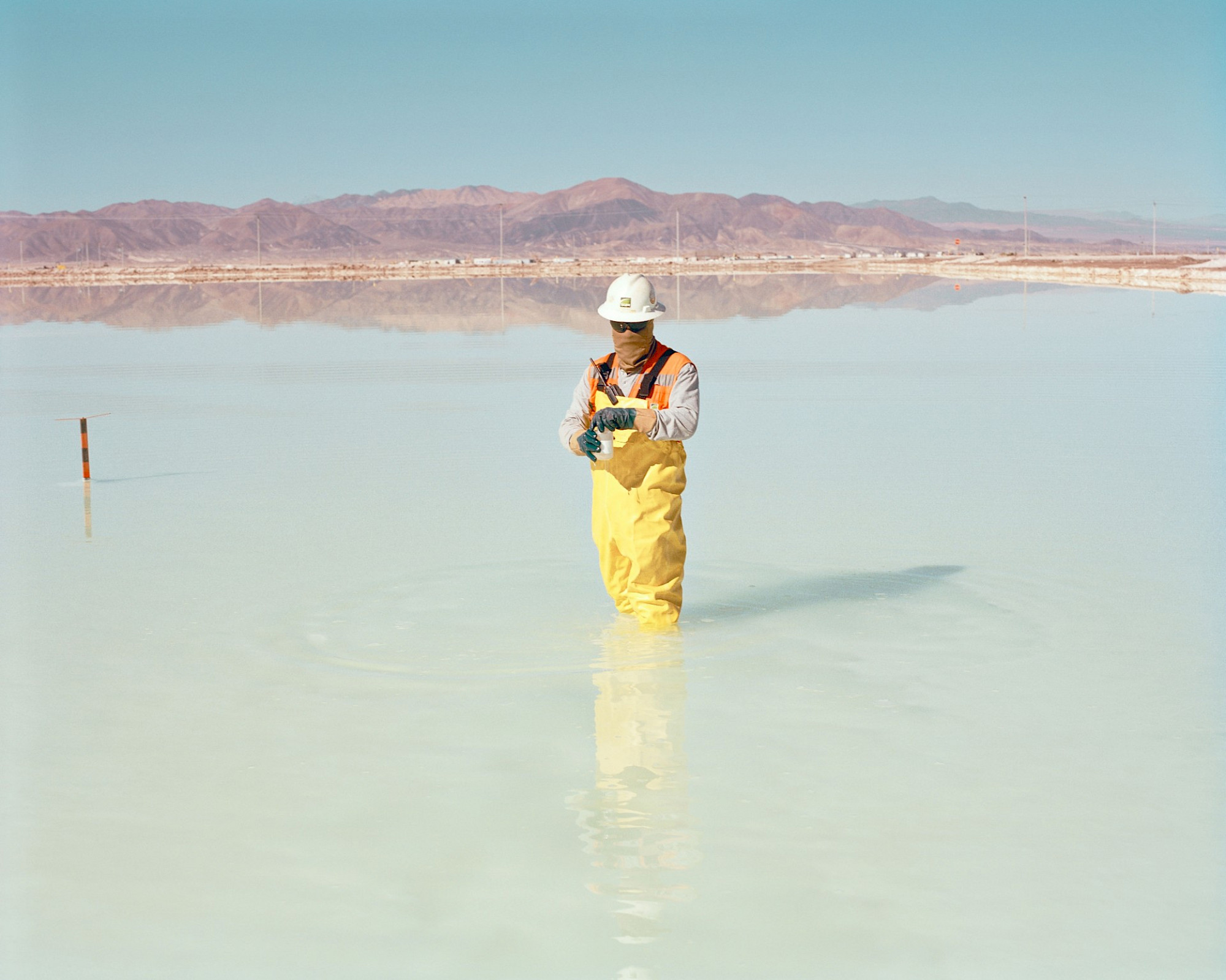In her thought-provoking photography series titled “Lithium Mining, Atacama Desert,” London-based artist Catherine Hyland delves into the complex relationship between human intervention, landscape, and the global demand for lithium.
Set in the arid expanses of the Atacama Desert in northern Chile, the series captures the dichotomy between the desolate beauty of the region and the industrial processes that extract this valuable element, which powers our modern digital lives.
The Lithium Boom:
Lithium, an essential element for modern technology, has become the driving force behind the booming demand for electric vehicles and portable electronic devices. And it is the Atacama Desert that houses the largest lithium reserves on the planet. Hyland’s photographs shed light on the stark and ugly realities of this industry, where the process of extracting lithium salts from the brine-laden salt flats takes center stage.
Taming the Wilderness:
In the series, Hyland captures the vast, desolate landscapes of the Atacama Desert, punctuated by the orderly grids of evaporation ponds. These ponds, adorned with mesmerizing hues of blue, green, and yellow, symbolize the concentration of lithium through solar evaporation. The juxtaposition between the immense, empty spaces and the meticulous organization imposed by human activity speaks to the human desire to control and pollute the environment for economic gain.
Empty Landscapes and Historical Narratives:
The depiction of emptiness has a long history of being utilized to justify expansionism, colonialism, and dominance. Hyland’s photographs draw parallels with historic images and maps, where vast landscapes were rendered empty, serving as a pretext for claiming ownership and control. By evoking this narrative, she prompts viewers to reflect on the consequences of such a perspective, urging us to question the impact of our actions on fragile ecosystems.
The Fragility of the Atacama:
Beyond the ordered grids and stunning colours lie the realities faced by the inhabitants of the Atacama. Hyland’s photographs reveal hints of human habitation, from dried-up salt ponds to deserted cars and scattered telephone cables.
These glimpses remind us that the Atacama is not an empty void but a land where people have lived for years, adapting to harsh conditions. Yet, the rapid growth of the lithium industry has brought about a dilemma for the local communities, torn between economic opportunities and the potential destruction of their fragile environment.
Long-Term Narratives:
Hyland’s work prompts us to consider the transient nature of the lithium boom. While the Atacama holds vast lithium reserves, the consumption of this valuable resource outpaces its replenishment. The mines will eventually close, but the land will remain, bearing traces of human intervention. It is a poignant reminder that our actions today must consider the long-term consequences for both the environment and the communities that rely on it.
All images in this article are courtesy of Catherine Hyland.













